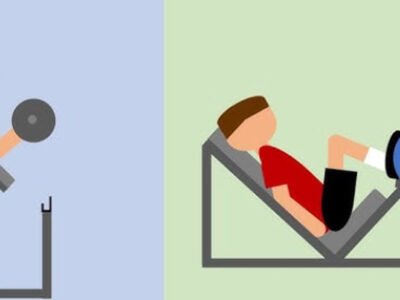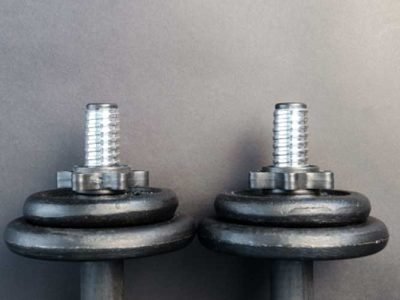Maintaining fitness equipment properly is critical for avoiding exercise-related injuries, which account for nearly 1 million ER visits annually. Implementing basic preventive maintenance routines for your exercise gear at home or in a gym can go a long way in optimizing safety and performance.
In this article, we will explore the key aspects of preventive fitness equipment maintenance in a simplified, easy-to-follow format. We will look at maintenance scheduling, cleaning techniques, lubrication, inspections, part replacements, and when professional servicing is advised.
Proper Preventive Maintenance Offers Many Benefits
Performing regular preventive maintenance on exercise equipment has several advantages beyond just keeping your gear working smoothly. It helps reduce the risk of mechanical failures and injuries caused by worn or faulty parts.
Well-maintained equipment has fewer breakdowns, extends the lifespan of parts, and saves money over time compared to repairs or replacements needed from lack of care.
Most importantly, diligent maintenance gives you peace of mind that your exercise routine will be safe and effective. When fitness gear is properly cared for, you can work out with confidence knowing hazards like broken cables or loose parts are not a concern.
Follow a Routine Maintenance Schedule
Establishing a maintenance routine is the foundation for successful equipment care. Daily checks for wiping down equipment and vacuuming around it should become a habit. These quick daily maintenance acts keep your exercise space clean and equipment free of dust buildup.
Weekly deep cleaning days are also advised, as well as monthly inspections and annual professional servicing if feasible. Setting reminders to clean, inspect, and service fitness gear on a schedule makes preventive maintenance much more manageable instead of a daunting chore.
Proper Cleaning is Vital
From disinfectant wipes on handles to keep germs at bay to spot-cleaning upholstery, keeping fitness gear clean is paramount. Dust buildup can damage moving parts over time, so regular vacuuming around equipment is also recommended.

Clean as you go by wiping sweat after each use to prevent corrosion and deterioration of parts. Disinfectant wipes on handles and touchpoints minimize the spread of bacteria and viruses. Deep clean upholstery or mats at least weekly using soap and water or specialized upholstery cleaner.
Be sure to fully dry any cleaned or wet surfaces to avoid moisture damage to components. Allowing moisture to linger can lead to rust and the growth of mold or mildew. A quick wipe down and then drying equipment with a towel after cleaning helps deter deterioration.
Lubrication Prevents Mechanical Issues
Lubricating moving parts helps prevent the friction, wear, and tear that can lead to mechanical breakdowns. Chains, pulleys, wheels, bearings, and bushings are common parts that need regular lubrication. This allows smooth motion and function.
Use lubricants designed specifically for exercise equipment moving parts like machine oils or dry Teflon-based spray lubes. Follow manufacturer specifications for what lubricants are compatible with your equipment. Apply just a few drops of oil or quick sprays of dry lube to hinges, chains, bushings, bearings, and other moving components.
Tightening loose bolts and hardware as part of routine lubrication also helps deter deterioration. A few drops of oil and a wrench to secure loosened parts go a long way in preventing bigger problems down the road.
Inspections Catch Problems Before Damage
In addition to cleaning and lubricating this equipment, regularly inspecting all components is advised. Check for fraying on cables and belts, wobbling parts, rust, and any corrosion. Loose bolts, cracked welds, and worn pads or grips should be replaced.
Inspections ensure worn parts are identified before they cause injury or equipment failure. A quick monthly walk-around lets you address issues promptly before small problems become major repairs.
Know When to Replace Parts
Being able to identify when a part needs replacement versus repair comes with experience. Some common signs a part is failing and needs to be swapped out include rattling, grinding, looseness, visible cracks or tears, corroded surfaces, and pits or grooves from friction.
Only replace parts from the original manufacturer or authorized dealer. Attempting to install cheap, generic replacement parts often leads to poor and even hazardous performance. Invest in quality replacement components made specifically for your equipment.
Professional Servicing for Optimal Safety
While DIY maintenance covers the basics, for true peak performance and the highest safety standards, annual professional servicing is recommended. Technicians can diagnose and fix issues beyond an owner’s technical expertise that may require further exercise equipment repair, ensuring all components meet specifications for ideal function.
Major repairs like part replacements are also best left to professionals with proper tools and training. If you cannot diagnose a problem, calling a technician is advised rather than attempting a repair yourself.
Conclusion
Regular maintenance does not need to be complicated or time-consuming. While some technical repairs are best left to professionals, implementing a regular maintenance schedule at home provides peace of mind that your equipment is always in its best condition. With just a little preventive care, your exercise routine will stay on track.















Comments